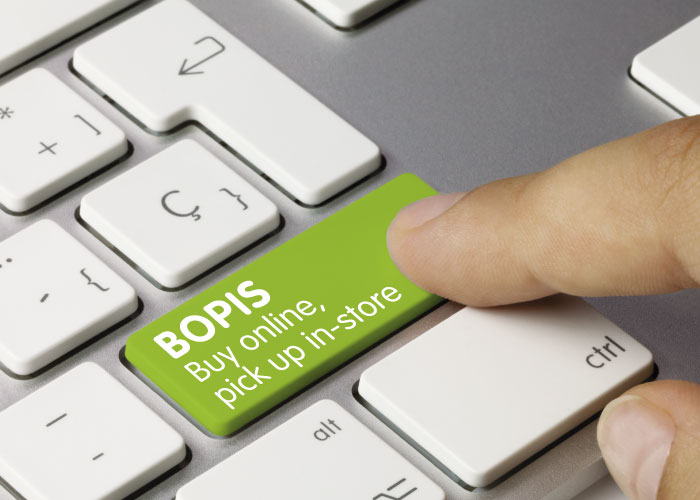Last year’s holiday shopping season broke a record when it comes to its share of online spending. e-commerce sales for the last holiday season (November and December) saw a two-year growth, up 32% year-over-year, and reached $188.2 billion in the US.
The holiday shopping season starts with Cyber Week, which includes Black Friday and Cyber Monday, and runs through to include the holiday sales at the beginning of January the next year.
- According to a survey from Creditcards.com, 62% of people said that they are planning on making their holiday shopping online this year.
- Emarketer expects e-commerce to account for 18.4% of total retail sales in the US this year.
- According to statistics from Statista, retail sales during the 2020 Christmas period were estimated at £73.46 billion (British pounds) (€86 billion) for the UK, just over £69 billion (€80.79 billion) for Germany, and £52.36 billion (€61.29 billion) for France.

3 Trends to watch during the 2021 holiday shopping season:
1. More ways to shop
The future of shopping is Hybrid
Hybrid shopping is the collaboration of both e-commerce and bricks & mortar stores.
People aren’t limited to one type of experience. Instead, they combine their shopping habits online and in-store to discover new products, do their research and make purchases.
Hybrid shopping combines the best of online and in-store shopping to create a personal, comfortable experience.
BOPIS
BOPIS (Buy online, pick up in-store) is a business model that allows consumers to place orders online and then pick up their purchases in the bricks & mortar store. BOPIS has grown strongly during the pandemic, and there is no indication that it’s something that would decrease in the near future. In a report by McKinsey and CO., 56% of shoppers state that they plan to continue using BOPIS even after the pandemic.
Shoppers want flexibility and the ability to choose for themselves, in how they want their orders fulfilled, and they want to be able to complete their purchases quickly and efficiently.
Benefits
Free shipping. If the shipping isn’t free, it almost always leads people away from checking out. Many look up the free shipping thresholds before even adding items to their online shopping carts.
Quicker service. If customers need an item immediately, it’s much faster to order an item that is in stock online, and pick it up in a few hours, than to wait several days for delivery. Offering customers to get their products fast is essential today; BOPIS can offer exactly that.

2. Mobile dominates the online retail sales
Mobile statistics
It’s predicted that, by the end of 2021, mobile devices will make up almost 73% of the total e-commerce sales globally.
Mobile is the most common platform to start searching on. According to Simicart:
- 48% of buyers use a mobile device to start searching with a search engine.
- 58% of Google searches are done via a mobile device. In 2016 it was 34%.
- 65% of clicks on paid Google search results come from a mobile device.
Mobile use in Europe during the 2020 holiday shopping season
According to Statista, it was estimated that around a third of consumers in the UK did their online holiday shopping using a computer last year. Around 63% of UK shoppers used a mobile device. In Italy, there was a 50/50 split between using a computer or mobile when shopping online.
Social commerce
Combining e-commerce with social media is very powerful. It enables consumers to explore and find products that they aren’t usually looking for on an e-commerce site. 60% of consumers use social media to research new products and services.
Social commerce is expected to account for 4.3% of all retail e-commerce sales in the US in 2021, according to Business Insider. Emarketer forecasts that social commerce will rise by $34.8% billion to $36.09 billion in 2021.
Today, the category that remains the largest for social commerce is fashion, which includes apparel and accessories. Electronics and home decor are also key players for social commerce growth.
In other words, social commerce is here to stay, and it will be very powerful in the future.

3. Early-placed online orders
An extended holiday season
The holiday shopping season is starting earlier than ever. With more people shopping online, and the pandemic still a threat, retailers are finding ways to extend their online offering. Retailers have had to rethink the traditional timeline for the holiday shopping season.
Early shopping
Most consumers are aware of the supply chain challenges impacting many industries due to the pandemic. Therefore, shoppers plan to holiday shop sooner than before to make sure their desired items still are available and to make sure that the order will be delivered without any delays. This is something retailers need to think about this (and future) holiday season and get their e-commerce stores in order earlier than before.

Take part in the holiday spirit, with the help of automated online merchandising.
Be more productive and save time by automating your online merchandising. Make sure you don’t market sold-out products on the homepage at any time.
A manual merchandising approach won’t do it
Online merchandising, carried out manually, can never deliver the sales growth required to justify retailers’ huge investment in driving quality traffic to their online stores. It has too many limitations.
There are simply not enough merchandisers out there, nor hours in the day, to effectively analyse the huge amounts of customer and product data required to optimise product exposure in real-time across catalogues running to tens of thousands of products.
What you need is a system powered by AI and machine learning and predictive analytics based on customer behavioural data, context and crowd wisdom. It presents each shopper with the most relevant selection of products, ordered in an optimum way to maximise sales.
Catching e-commerce trends
One of the most common complaints from online retailers is about a lack of agility. Many lose out on vital sales, and longer-term brand loyalty through a failure to react quickly to trends, especially micro-trends driven by social media. It can take at least 24 hours to respond – that is simply too late.
Merchandising powered by AI and machine learning technologies change the game by automating product assortment and sort order decisions. Trends are spotted in real-time, and this influences everything from search and recommendations to promotional panels, to instantly push trending products to the foreground, and the system adapts just as quickly once trends fizzle out.
Humans and machines doing what they’re best at
Of course, the route to retail success is not solely one of more sales, it’s also about driving cost and resource efficiency. For online retailers still relying on manual merchandising, that is particularly difficult, since scaling up teams to do more of the same is expensive.
In truth, much of the day-to-day merchandising job is one of number crunching – a task that is ideally suited to computers. AI and automation completely change the nature of merchandising. The day-to-day decisions are in the hands of computers – reacting to massive amounts of customer data in real-time.
That leaves merchandisers to focus where their skills can have the greatest impact – in making higher level, strategic and creative decisions.
We wish you all a Merry Christmas and a Happy New Year. Looking forward to a new, hopefully, more normal 2022!












